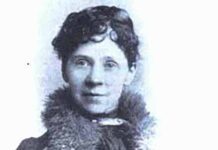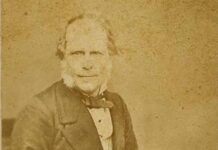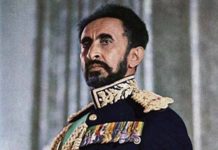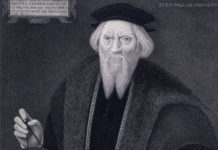By late August, 1533, all was in readiness for Anne to retire into seclusion for the birth of her child. In those days, queens took refuge in a sealed-up set of chambers during childbirth, waited on by none but women, not allowed to venture outdoors or even to have windows opened to the fresh breezes and cooling showers of an English summer. For one heavily pregnant during the hottest months of the year, this must have been torture – but in Anne’s case it didn’t last long. In early September she went into labor and was safely and thankfully delivered of the long-desired child. Edward had been chosen as its name.
The plans, at the last minute, had to be changed. In spite of the promises of the new queen to her liege lord, in spite of the prognostications of every forecaster in the country, in spite of the assurances of astrologers and seers, the unthinkable had happened. The queen, to her own dismay, was delivered of a healthy, beautiful, red-haired daughter.
Stunned and angry, Henry managed to control his temper long enough to bless the midwife, the servants, and to kiss his wife briefly before flinging himself out of the birthing chamber. An “s” was added to the word “prince” in the already-printed birth announcements (“princes” being an accepted spelling of “princess” in those days). The child was named Elizabeth, after both Henry’s and Anne’s mothers, and in time Henry came to believe that, as they had managed a healthy and perfectly-formed daughter, it was just a trial-run for the son who was surely to come.
But already his eye had begun to stray from his new wife, and before the first year of their marriage was out, he was already having a very secret affair with Anne’s cousin, Madge Shelton, to be followed not long after by a very public yearning towards a new lady-in-waiting, one Jane Seymour.
Anne threatened, cried, screamed and harangued in vain. She was coldly informed by her once-doting husband that she had been raised to her present position by him, and, by God, she could be lowered just as easily! She had better just close her eyes and accept his infidelities, as her “betters” (meaning Queen Catherine) had done. The tormented, adoring and frantically besotted suitor had become the bored, annoyed and frustrated husband.
At some point Anne became pregnant once again, but the pregnancy must have ended in miscarriage rather early on, because it simply disappears from mention in the chronicles with no note of the birth or the sex of the child.
Henry was forced, of necessity, to declare the tiny princess Elizabeth as his new heir – thereby replacing one unsatisfactory princess with another and making a mockery out of his own arguments for divorce and the many years he had spent battling for that freedom. Increasingly angry and frustrated, Henry yet continued in his course, coercing his nobles and church leaders into signing the Act of Supremacy and the Act of Succession, thereby cementing his absolute power, both earthly and heavenly, in England, and ensuring the loyalty of his subjects to their new crown princess, the future Elizabeth I.
Anne, interestingly enough, seems to have become an unrepentant shrew at this time, domineering and demanding, growing wilder and more violent in her temper tantrums as the months passed and she failed to produce the son on whom her future depended – until Henry, ironically, began to long for the quiet, agreeable Catherine, now close to death in the distant palace of Kimbolton.
In his wrath and bewilderment he rammed his will through Parliament, executing those who refused to bend to his commands, including such long-time friends and supporters as Thomas More, Prior John Fox, and numerous nameless priests and subjects who could not, in good conscience, sublimate the will of the Church to the will of their King.
It was evident that, with growing anger and resentment between the married couple, increasing infidelity on Henry’s part, Anne’s burgeoning panic at being unable to produce a son, and the discontent in the country over the turn events had taken, something was bound to give in an enormous way at any moment.
Curiously enough, the common people of England never seem to have blamed Henry for any of the misfortunes the country was now heir to. Initially they blamed Wolsey, and later Anne, but never their king, whom they continued to love and revere throughout the entire process. They perceived him as the golden prince of their memory, bewitched by a scheming wench, bewildered by events and working tirelessly to cement the future of his realm against all odds.
Anne, speaking from the records of the times, was one of the most generous monarchs of the age, giving more money in charity even than Catherine, endowing colleges and scholarships, and even sewing shirts and blankets for the poor with her own hands. She read and studied, wrote poetry and music, and worked earnestly for the good of those she saw suffering around her. But it made no impression on those who were determined to hate her. And unfortunately for Anne, the king was now numbered among these.
The crisis came with Anne’s third and last pregnancy. In early 1536 she was delivered of the prayed-for son – but it was born dead. The Duke of Norfolk, Thomas Howard, Anne’s uncle on her mother’s side, neatly summed up the situation when he heard the news. “She has miscarried,” he said, “of her savior.” Henry stormed from the room, ordering Anne to come near him no more for “you will have no more sons by me!” Thus began the open estrangement which culminated in Anne’s road to indictment, imprisonment and, finally, the block.
Who it was that first hit upon the idea of treason as a solution for Henry’s dilemma is uncertain, but it didn’t take long for the idea to appeal to Henry. It may have been that unscrupulous opportunist, Thomas Cromwell, a protégé of Wolsey’s who had managed to rise even as Wolsey fell, and who was now one of the king’s closest advisors. Whether or not Cromwell was the instigator, he was indeed a tool of the scheme, gathering the necessary evidence and drawing the net tighter and tighter around Anne and her hapless fellow-accused.
For Anne to commit adultery was only a treasonable offense for those who slept with her; but the crime of “imagining the king’s death” – that is, discussing or even admitting the possibility that the king would die someday, much less plotting to murder him – did constitute treason. Along with the adultery, Cromwell meant to accuse Anne of this ultimate offense.
Anne was arrested without warning and taken to the Tower of London on 2 May, 1536. We will never know if Henry genuinely believed the charges which were brought against her, but it seems unlikely. The queen was so closely attended – and this one was so greatly disliked that she was scrutinized as no other English queen had been – that it would have been suicide for her to risk a casual liaison right under the nose of king and court. Some have suggested that Anne was so desperate to conceive a child that she might have turned to lovers to help gain that end – but there is no evidence to support the idea that Henry was unable to father a child. He had gotten his first wife pregnant repeatedly, and had done the same with Anne.
None of her accused lovers confessed except for the musician Mark Smeaton, and historians are almost unanimously convinced that he did so only under torture. Henry’s desire to be rid of Anne was by this time so great that he was willing to strike at even his closest friends in order to separate himself from her, and the men accused with her, with the exception of Mark Smeaton, were all close friends of the royal couple. To make the accusations the more appalling (and possibly to ensure the Boleyn family’s downfall) Cromwell included incest in the charges when he arrested Anne’s brother, George, Lord Rochford. Arrested with him were the courtiers Sir Henry Norris, Sir Francis Weston, and William Brereton, all members of the king’s privy chamber. The commoner musician, Mark Smeaton, was also arrested.
The only evidence Cromwell had of Anne’s “imagining the king’s death” was a scrap of dialogue between Anne and Henry Norris, in which Anne asks Henry why he has not yet gotten engaged to Madge Shelton, the king’s former mistress, of whom he was known to be enamored. Norris replied, in the accepted fashion of the game of courtly love and flirtation, that there was one person in the queen’s household that he loved better than Madge. Pressed, he admitted that it was the queen herself. The queen replied haughtily, as befitted the object in the game of courtly love, that “you look for dead men’s shoes; for if ought came to the king but good, you would look to have me.” Things had gotten a little out of hand with this teasing statement, and Norris was quick to repudiate such a thought. However, the damage had been done, and the conversation was communicated to Cromwell as grist for his mill.
A fairly long monograph might encompass all the details of the trial of Anne and her fellows, but this essay does not admit of time for such an exploration. Suffice it to say that all were convicted and executed – a foregone conclusion, considering the king’s desire to remarry. It is interesting to note that Henry offered Anne her freedom if she would agree that the marriage had never taken place, and that her child, Elizabeth, was a bastard – an odd fancy on the king’s part, for if he and Anne had never married, then she could not have committed adultery! Regardless of this, Anne was executed on 19 May, 1536, a little over three years since her marriage to Henry.
No provision had been made for her burial, and after the body had been left for several hours to lie in the sun, an arrow chest was found by her ladies to serve as a coffin. It would have been too short for an ordinary corpse, but just fitted one with no head. She was buried in the Chapel of St. Peter ad Vincula on the grounds of the Tower of London.
Eleven days later, Henry married Jane Seymour at her family home of Wulfhall.








